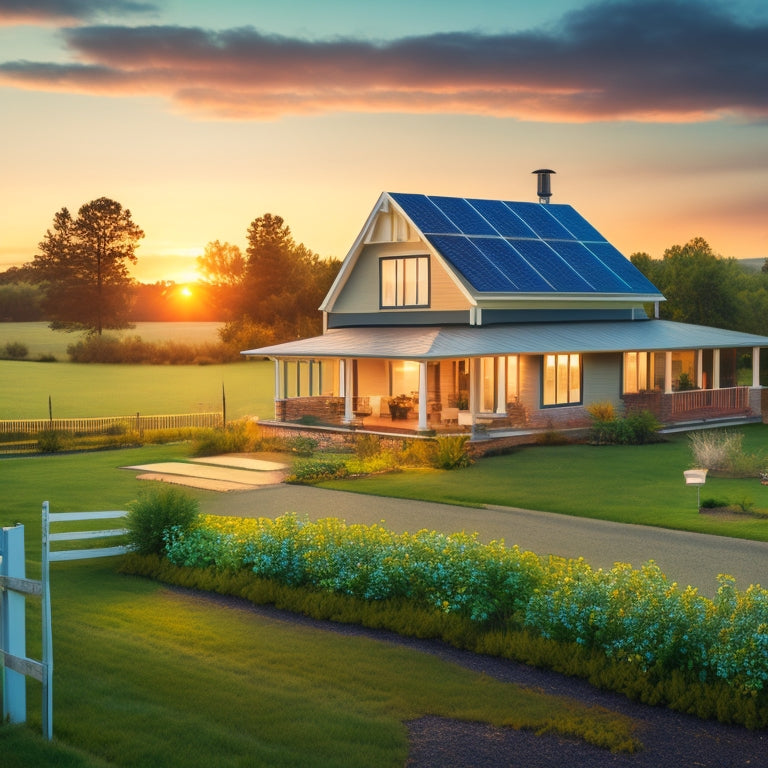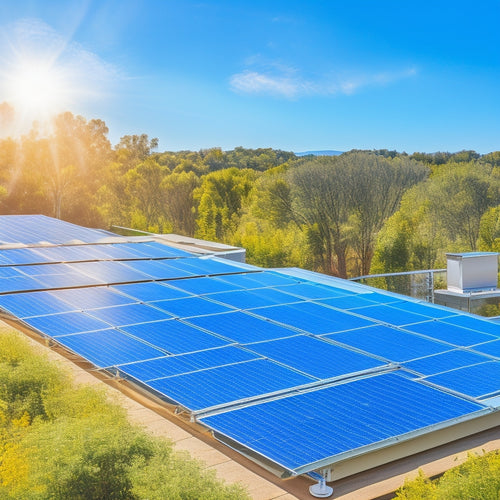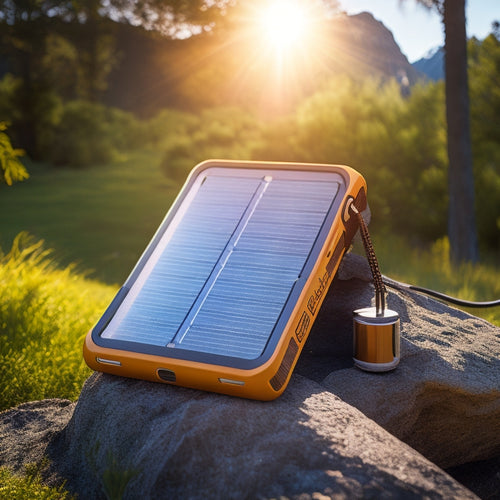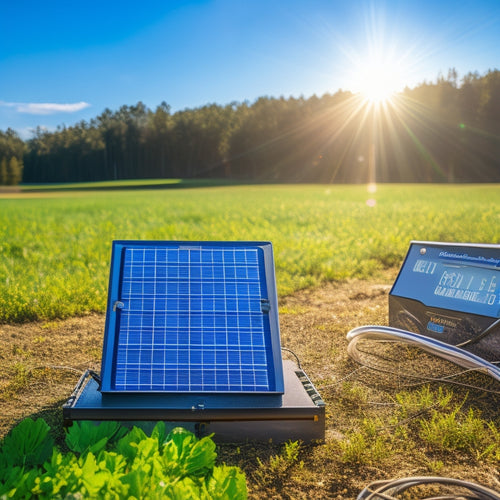
Design Your Energy Independence With 3 Key Tips
Share
To design your energy independence, you'll want to start by evaluating your energy needs, considering your household size, daily habits, and appliance types to identify areas for reduction. Next, choose a reputable brand that offers quality products and warranties, with transparency about performance and durability. Finally, optimize your system design by selecting compatible components, sizing your system correctly, and exploring grid connection options to maximize energy generation and minimize grid reliance - and that's just the beginning of your expedition to energy self-sufficiency.
Overview
- Evaluate your energy consumption patterns to identify areas for reduction and prioritize essential loads for optimal system design.
- Research and choose reputable brands with a proven track record of quality products, warranties, and transparent performance data.
- Properly size your renewable energy system to maximize energy generation, minimize grid reliance, and ensure a stable energy supply.
- Consider grid connection options to feed excess energy back into the system and offset peak consumption hours.
- Conduct a thorough energy audit to categorize loads and optimize system efficiency by selecting compatible components.
Assessing Your Energy Needs
Get down to business and pinpoint exactly how much energy you're using by evaluating your energy needs.
Take a closer look at your energy consumption patterns to identify areas where you can cut back. Consider your lifestyle factors, such as the number of people in your household, your daily habits, and the types of appliances you use.
Make a list of all the devices and gadgets that consume energy in your home, from lights and refrigerators to computers and TVs. Calculate your daily energy usage and identify the peak hours when you use the most energy.
To guarantee accuracy, conduct an energy audit to determine daily energy consumption in watt-hours, and categorize loads as essential, semi-essential, and non-essential for efficient energy management.
This assessment will give you a clear illustration of your energy needs, helping you make informed decisions about reducing your energy dependence and achieving freedom from the grid.
Choosing the Right Brand
More than a few energy independence enthusiasts find themselves overwhelmed by the numerous brands and products claiming to be the solution to their energy needs. When choosing the right brand, you need to do your due diligence.
Start by researching a brand's reputation - what do other customers say about their products and services? Look for brands with a proven track record of providing quality products and standing behind them with strong product warranties.
Consider reputable brands like Tesla, LG, and Sonnen, known for innovative solutions and quality. A reputable brand will be transparent about their products' performance and durability, giving you confidence in your investment.
Optimizing Your System Design
Designing an ideal system is essential to achieving energy independence. You want to guarantee that your system is optimized to maximize energy production and minimize waste.
To do this, focus on system efficiency by selecting components that work seamlessly together. Consider the size and type of renewable sources, such as solar panels or wind turbines, that best suit your energy needs and location. Properly sizing your system will help you generate the most energy while reducing your reliance on the grid.
Additionally, grid connection allows feeding excess energy back, offsetting energy consumption and guaranteeing a stable supply.
Frequently Asked Questions
Can I Install a Solar Panel System Myself to Save Money?
You can attempt a DIY solar installation to save money, but be aware that it'll require significant time and skill, and may not be cost-effective in the long run, considering potential mistakes and safety risks.
How Long Does It Take to See a Return on Investment?
You'll breathe a sigh of relief when you see your energy bills dwindle, wondering when you'll break even; a thorough investment analysis reveals a payback period of around 5-7 years, after which you'll reap the financial rewards of going solar.
Are Energy Storage Batteries Worth the Additional Cost?
You're wondering if energy storage batteries are worth the extra cost. Considering their 10-15 year battery lifespan, reduced installation costs, and positive environmental impact, they're a smart investment, especially when paired with energy-efficient systems that maximize your energy independence.
Can I Use Solar Power During a Grid Outage?
You crave grid independence, and rightly so! You wonder, can I utilize solar power during outages? Yes, you can, but only if your system's equipped with a battery and proper infrastructure, allowing you to tap into that free energy when you need it most.
Will Solar Panels Increase My Property Value?
You'll enhance your property value with solar panels, as they're viewed as a desirable upgrade during a property appraisal, and you can capitalize on solar incentives, making your home more attractive to potential buyers and increasing its resale value.
Ready to Buy
As you commence on designing your energy independence, remember that it's a voyage, not a destination. Think of it like steering through a roadmap to a cache of savings and sustainability. With every turn, you'll uncover new opportunities to optimize your energy system. By following these 3 key tips, you'll be charting your course to energy freedom. And, just like the 80% of homeowners who've already made the switch, you'll be utilizing the power of independence, one kilowatt at a time.
Related Posts
-

What Types of Solar Energy Devices Are Available
You'll find several types of solar energy devices available today, each customized to different energy needs. Photovo...
-

Fastest Solar Chargers for Emergency Power
When choosing the fastest solar chargers for emergency power, you need to focus on features like rapid charging capab...
-

Choosing the Right Solar Power Charge Controller
Choosing the right solar power charge controller is crucial for maximizing energy efficiency and extending battery li...


